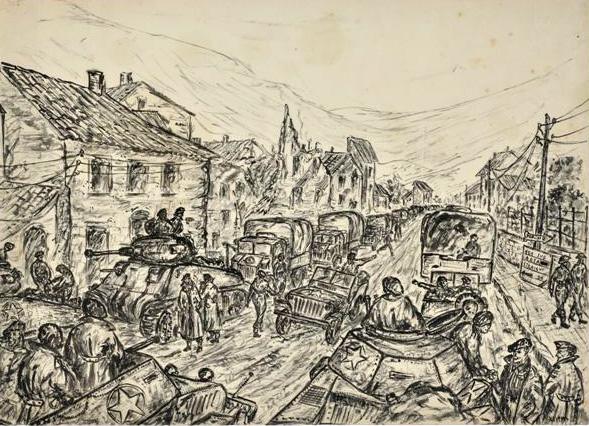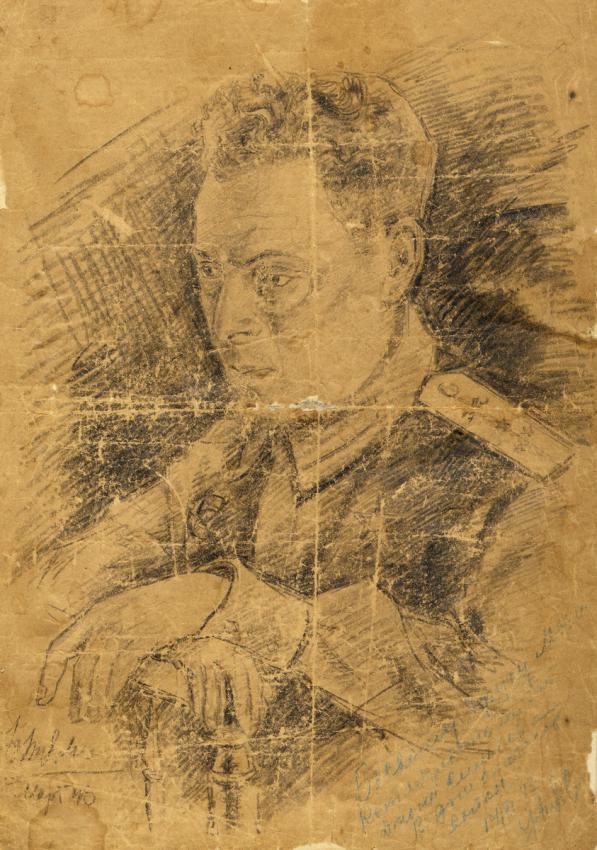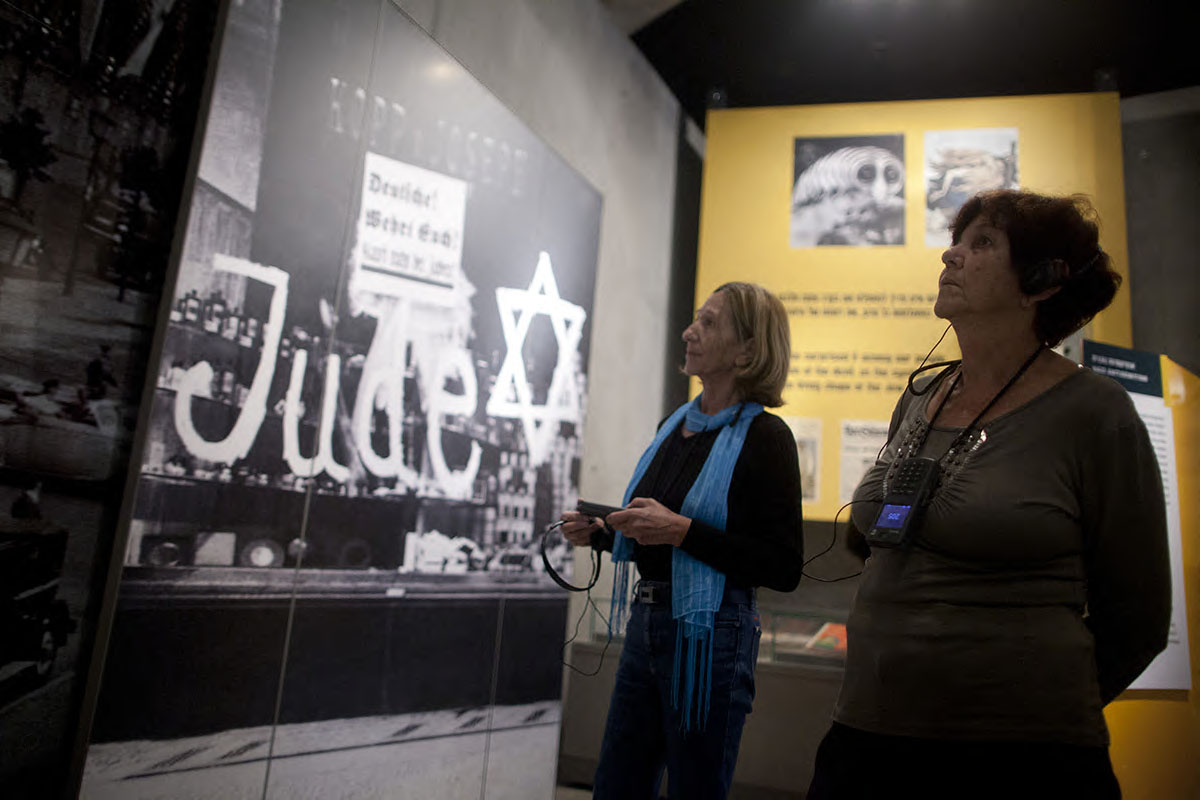
Yad Vashem Art Collection


Yad Vashem Art Collection

Sunday to Thursday: 09:00-17:00
Fridays and Holiday eves: 09:00-14:00
Yad Vashem is closed on Saturdays and all Jewish Holidays.
Entrance to the Holocaust History Museum is not permitted for children under the age of 10. Babies in strollers or carriers will not be permitted to enter.

Yad Vashem Art Collection


Yad Vashem Art Collection

When the national "Gathering the Fragments" campaign was launched, staff at the Museum of Holocaust Art imagined that the number of art works that survived the Holocaust would be small. It was therefore particularly gratifying to discover that survivors and their families have not only kept and cherished paintings and drawings from that time, but also believe Yad Vashem constitutes the designated home for future generations.
Obviously, "Gathering the Fragments" does not end with the arrival of a work of art to the Museum’s collection. A process is thus initiated where shards of information pertaining to the image’s history and that of the artist become the launching point for extensive research about the work’s historical contexts, thereby recreating a complete mosaic out of a salvaged fragment.
Every work of art encompasses a one-of-a-kind story – a unique meeting point between the artist and the subject matter. Jointly, they embrace a fascinating encounter at a given point in time, at the very heart of the fateful events, pitting the artist’s need to express him- or herself against the people, events and landscapes of the time.
Luigi Fleischmann
In his book From Fiume to Navelli (Yad Vashem, 2007), Luigi Fleischmann tells his story as a 16-year-old during WWII in Italy, and provides testimony about the fate of his family in the detention camp in the village of Navelli. This camp, like other camps in Italy, allowed Jewish families to stay together and conduct communal and cultural life. Fleischman’s book focuses on the last months of the war, from September 1943, when Italy turned its back on Hitler, and Germany went to war against the Allies on Italian territory. For Italy’s Jews, those were days of persecution, capture and deportation to concentration camps.
Helping set the scene are a number of his own ink drawings in the book's appendix, which testify to Fleischmann's curiosity and intention to document his encounters. Recently, Fleischmann's widow, Noga, donated over 200 of his drawings to Yad Vashem. The annals of her late husband unfold like a documentary filmed by a war correspondent. Fleischmann provides both precise descriptions and images of the battles raging against the Nazi occupier in the landscapes of central Italy. His unusual powers of observation coupled with his sense of mission – to document the events down to the smallest detail – furnish us with a unique visual diary of the time.
Mojsej Isajewicz Kotlarewskij
It is well known that the Jews of the USSR joined the war effort against Nazi Germany en masse. However, these heroes remained largely anonymous in the chronicles of Jewish heroism, until many veterans of that war immigrated to Israel in the 1990s. Recently, Bella Podolsky gave Yad Vashem a yellowing, cracked sheet of paper bearing a pencil sketch of her father, Mojsej Isajewicz Kotlarewskij, wearing a Red Army uniform.
According to military documents, Comrade Kotlarewskij was drafted on 25 June 1941, and served as a military commissar in Battalion 139. At the time, he was married to Sonya, and the couple had two children. Kotlarewskij's battalion participated in breaking the siege of Leningrad in January 1943, for which he was awarded the Leningrad Defenders’ Medal. He received a second medal in 1946 for “Outstanding Bravery in the Great War for the Motherland.” An insight to Kotlarewskij's unique personality may be gained from a few selected and moving lines written by a Sergeant Vlasov, who served under his command:
It’s really true, my friends,
the Commissar is our good friend
He is stowed in the soul of the fighter
Like vapor in a boiler
All the soldiers love him
As if he were their beloved father.
These lines are how Kotlarewskij will be remembered in the annals of the war, and testify to the bravery of all the Jewish soldiers who served in the ranks of the Red Army fighting – and ultimately defeating – the Nazi perpetrator in WWII.
First published in Yad Vashem Jerusalem magazine, #62, July 2011

Thank you for registering to receive information from Yad Vashem.
You will receive periodic updates regarding recent events, publications and new initiatives.

"The work of Yad Vashem is critical and necessary to remind the world of the consequences of hate"
Paul Daly
#GivingTuesday
Donate to Educate Against Hate


Worldwide antisemitism is on the rise.
At Yad Vashem, we strive to make the world a better place by combating antisemitism through teacher training, international lectures and workshops and online courses.
We need you to partner with us in this vital mission to #EducateAgainstHate
The good news:
The Yad Vashem website had recently undergone a major upgrade!
The less good news:
The page you are looking for has apparently been moved.
We are therefore redirecting you to what we hope will be a useful landing page.
For any questions/clarifications/problems, please contact: webmaster@yadvashem.org.il
Press the X button to continue



